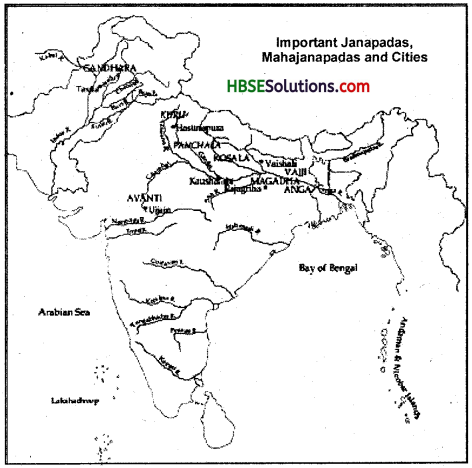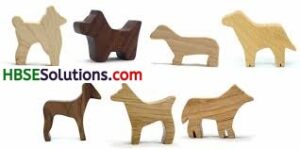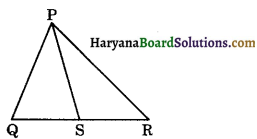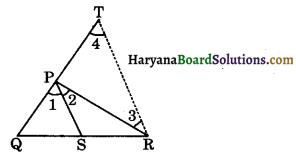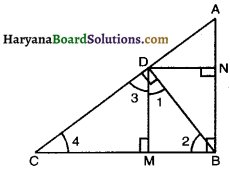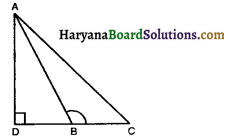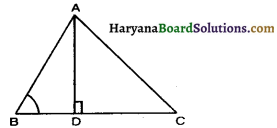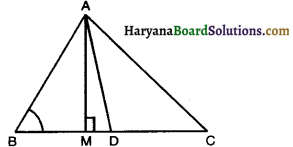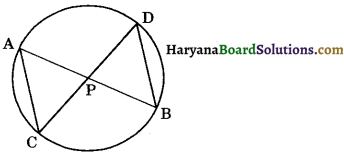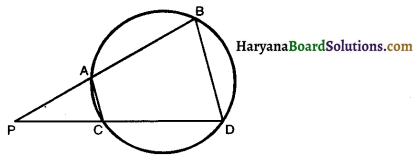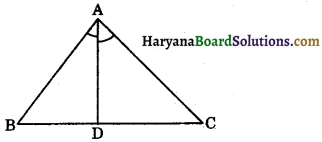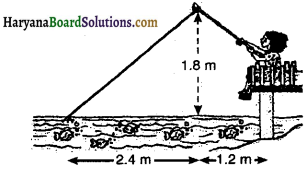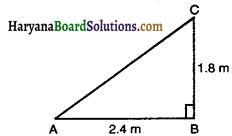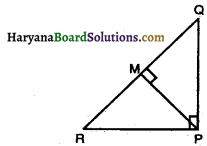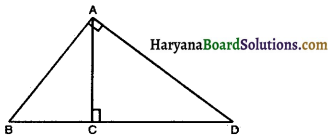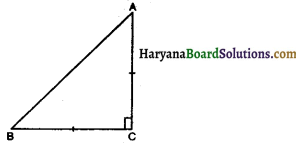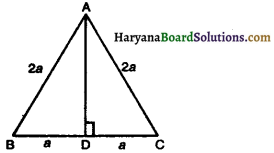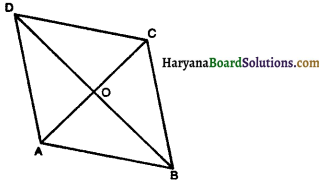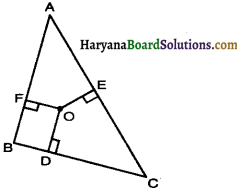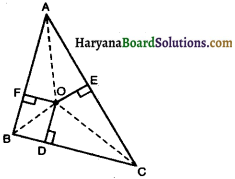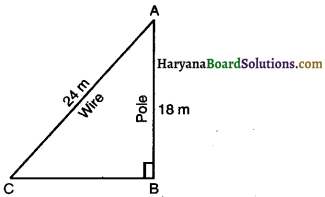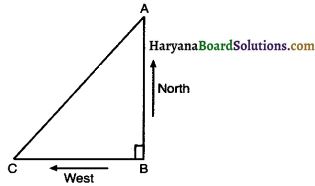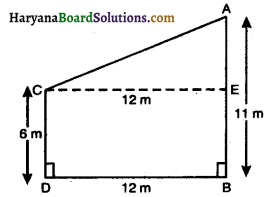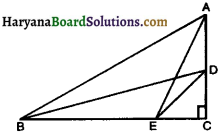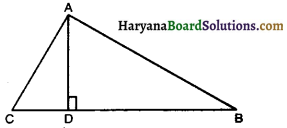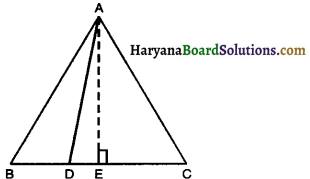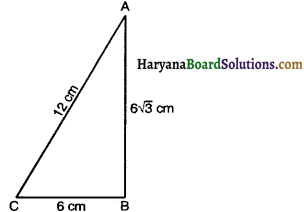HBSE 6th Class Social Science Solutions Civics Chapter 2 Diversity and Discrimination
Haryana State Board HBSE 6th Class Social Science Solutions Civics Chapter 2 Diversity and Discrimination Textbook Exercise Questions and Answers.
Haryana Board 6th Class Social Science Solutions Civics Chapter 2 Diversity and Discrimination
HBSE 6th Class Civics Diversity and Discrimination Textbook Questions and Answers
Diversity and Discrimination HBSE 6th Class Question 1.
Match the following statements in a way that challenges stereotypes:
| (a) Two surgeons were sitting down to lunch when one of them made a call on the mobile phone. | 1. suffers from chronic asthma. |
| (b) The boy who won the drawing competition went to the dias. | 2. to become an astronaut which she did. |
| (c) One of the fastest athletes in the world. | 3. to speak with her daughter who had just returned from school. |
| (d) She was not that well-off but had a dream. | 4. on a wheelchair to collect his prize. |
Answer:
| (a) Two surgeons were sitting down to lunch when one of them made a call on the mobile phone. | 3. to speak with her daughter who had just returned from school. |
| (b) The boy who won the drawing competition went to the dias. | 4. on a wheelchair to collect his prize. |
| (c) One of the fastest athletes in the world. | 1. suffers from chronic asthma. |
| (d) She was not that well-off but had a dream. | 2. to become an astronaut which she did. |
![]()
Class 6 History Chapter 2 HBSE Question 2.
How can the stereotype that girls are a burden on their parents affect the life of a daughter? Imagine this situation and list at least five different effect that this stereotype can have on the way daughters get treated in the houses.
Answer:
The stereotype girls are a burden on their parents affect the life of a daughter in the following ways:
- They are not given nutritious food.
- They are not allowed to attend or join schools.
- They are not properly cared for.
- They have to do household work in their childhood.
- Sometimes, they are married at an early age which is not good for their physical and mental health.
Diversity and Discrimination Class 6 Notes HBSE Question 3.
What does the Constitution say with regard to equality? Why do you think it is important for all people to be equal?
Answer:
The first page of the Constitution says: “Equality of status and of opportunities and to promote among them all”.
It is important for all people to be equal because this equality is a key value that unites us all. If the people are not equal; it would be detrimental for the development of our nation. Equality is important to ensure justice to one and all. If all live together and equal opportunities are given to all people, that will be the true essence of our democracy.
Class 6 History Chapter 2 Questions And Answers HBSE Question 4.
Sometimes people make prejudiced comments in our presence. We are often in a position to do anything about this because it is difficult to say something right then and there. Divide the class into groups and each group discuss what they could do in one of the following situations:
- A friend begins to tease a classmate because he is poor.
- You are watching TV with your family and – one of them makes a prejudicial comment about a particular religious community.
- Children in your class refuse to share their food with a particular person because they think she is dirty.
- Someone tells you a joke that makes fun of a community because of their accent.
- Some boys make remarks about girls not being able to play games as well as them.
Discuss in class what the different groups have suggested for the above situations, and also talk about the problems that can come up when raising the issue.
Answer:
- The classmate would be convinced that being rich or poor is not something to be laughed at.
- He/she would be prevented from doing this since all religions are equal before law.
- I would advise my classmates to be friendly with one and all.
- I would not get involved in the joke and later on tell him/her not to crack such jokes which cause embarrassment to a particulars community.
- I would explain to them through examples of Sania Mirza, Kalpana Chawla that girls are equally good in all fields.
![]()
Diversity and Discrimination 6th Class HBSE Question 5.
Below are some statements on people living in rural and urban areas. Tick mark those that you agree with:
On Rural People
(1) More than 50% of all Indians live in villages.
(2) Villagers do not care about their health. They are full of superstitions.
(3) People in villages are backward and lazy. They do not like to work.
(4) In peak harvesting and plantation season, families spend 12 to 14 hours working in the fields.
(5) Villagers are dirty and not hygienic.
On Urban People
(1) Life in the city is easy. People here are spoilt and lazy.
(2) In cities families spend very little time with each other.
(3) People in towns only care about money, not about people.
(4) Living in a city is expensive. A large part of people’s earnings is spent on rent and transport.
(5) City people cannot be trusted, they are cunning and corrupt
Answer:
| On Rural People | On Urban People |
| (1) ✓ | (1) ✗ |
| (2) ✓ | (2) ✓ |
| (3) ✗ | (3) ✓ |
| (4) ✓ | (4) ✓ |
| (5) ✗ | (5) ✗ |
![]()
Question 6.
Can you list some of the prejudices that you have noticed around you. How do they affect the ways in which people treat each other?
Answer:
Some of the prejudices that I have noticed around are:
(a) Prejudice against caste
(b) Prejudice against colour, eating habits.
(c) Prejudice against sex.
The affect in the following ways in which people treat each other.
(a) They tease other people.
(b) They laugh at them.
(c) They use dirty language.
(d) They cast remarks upon others.
(e) They begin to abouse each other.
Question 7.
The children you see in the illustrations here were seen as ‘disabled’. This term has been changed and now the term used is ‘children with special needs’. Common stereotypes about them are given in large letters. Their own feeling and thoughts too are given.
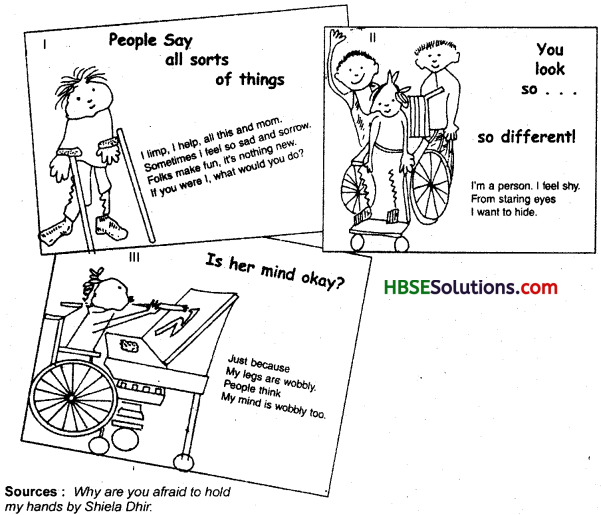
- Do you think children with special needs should be a part of regular schools or study in a separate school? Give reasons for you answer.
Answer:
Picture I: The boy is tense and sad because the people make fun of him because he is limpatic. He tries to make people understand how they would feel if they were in his place. That means such a thing could happen to anyone.
Picture II: The person feels shy because the people find him different. He wants to hide himself from the persons who stare at him.
Picture III: The child wonders why people consider her mentally weak also when she is physically weak.
I think that children with special needs should be a part of regular school and should in a separate school because we should not let them develop any complexes. They should not feel themselves disregarded.
Question 8.
What is the difference between discrimination and stereotypes?
Answer:
‘Discrimination’ is a state in which one person is discriminated from others due to some financial nardshapes or caste differences. For example: In our society; untouchables and dalits are discriminated against.
‘Stereotypes’ refers to fixing people into one image. For example: Some people are considered stingy, lazy and dirty.
Question 9.
Despite the children offering money, the cartmen refused them. Why?
Answer:
The cartmen refused the children because:
(a) They were not prepared to suffer being polluted.
(b) They were not prepared to carry passengers of the untouchable class.
![]()
HBSE 6th Class Civics Diversity and Discrimination Important Questions and Answers
Very Short Answer Type Questions
Question 1.
What are prejudices?
Answer:
Prejudices are fixed negative opinions which we make about certain people.
For example:
Village people are poor, dirty and ignorant
Or
City people are cunning and corrupt.
Question 2.
What is a Constitution?
Answer:
A Constitution is a document that lay down the rules by which the nation would function.
Question 3.
What is Mahar?
Answer:
Mahar is one of the communities which were treated as untouchables in the Bombay Presidency.
Question 4.
What is Preamble of the constitution?
Answer:
The first page of the Constitution that clearly states all Indians are entitled to equality of status and opportunity.
Question 5.
Why did Dr. Ambedkar convert to Buddhism?
Answer:
Dr. Ambedkar converted to Buddhism in his search for a religion that treated all members equally.
![]()
Short Answer Type Questions
Question 1.
What are the things about which we are prejudiced? What happens because of prejudices?
Answer:
The things about which we are prejudiced are:
(a) people’s religious beliefs
(b) the colour of their skin
(c) the region they come from
(d) the accent they speak in
(e) the clothes they wear.
Because of our prejudices, we don’t want to form friendship with those who are prejudiced against. Often, we hurt such people also.
Question 2.
Name the different terms which are used to address the low caste people.
Answer:
The different terms used to address the low caste people are:
(i) Dalit is the term used for the people who belong to the so called lower castes to address themselves. They prefer this word to untouchables. Dalit means those who have been broken. The word according to them shows how social prejudices and discrimination have broken the Dalit people.
(ii) This government refers to this group of people as Schedule Caste.
Question 3.
Give examples from everyday life when discrimination happens.
Answer:
In everyday life, discrimination happens when people act on their prejudices or stereotypes. Some examples are:
1. If you stop people from taking part in certain social activities.
2. If we stop them from living in certain neighbourhoods.
3. If we prevent them from taking water from the same well or hand pump
4. If we do not allow certain people to drink tea in the same cups or glasses as others.
Question 4.
What hardships did Mahar suffer?
Answer:
1. Mahars were poor and owned no land.
2. Children born to them also had to do the work their parents did.
3. Mahars lived in spaces outside the villages.
4. Mahars were not allowed into the village.
![]()
Long Answer Type Questions
Question 1.
What are ill-effects of stereo-types?
Answer:
The following are ill-effects:
(i) Stereotypes stop us hum looking at each person as a unique individual with his or her own special qualities and skills that are different from others.
(ii) Stereotypes fit large numbers of people into only one pattern or type.
(iii) Stereotypes affects all of us they prevent us from doing certain things that we might otherwise be good at.
Question 2.
What can be the possible reasons for discrimination in a society?
Answer:
Discrimination happens when people act on their prejudices or stereotypes.
Discrimination can take place because of several reasons some of which are:
(i) The diversity that people belong to different religions can be a source of discrimination.
(ii) Groups of people who may speak a certain language, follow a particular religion, live in specific regions etc; may be discriminated against as their customs or practices may be seen as inferior.
(iii) People may be discriminated against because of their poor economic backgrounds. They don’t carry high braved goods like other people do and they are discriminated against in schools, hospitals and offices.
(iv) Sometimes people experience discrimination because of both reasons, (a) They are poor, (b) They belong to groups whose culture is not valued.
(v) People are sometimes discriminated against the kind of work. They do. This is so because certain kinds of work are more valued than others. For example: people who do the tasks of cleaning, washing cutting hair and picking garbage are the tasks which are valued less than the others.
Question 3.
How did Dalits, women and peasants fight against inequalities?
Answer:
(i) Many Dalits organised themselves to gain entry into temples.
(ii) Women demanded that they should have as much a right to education as men did.
(iii) Peasants fought to release themselves from the grasp of the money lender and the high interest they were charged.
Question 4.
What steps have been provided in the constitution of India against inequality and discrimination?
Answer:
Learning from the past experiences of inequality in Indian society, the framers of the Constitution had strong arguments against the prevalent system. They undertook the following safeguards against inequality and discrimination.
- Everyone has equal rights and opportunities.
- Untouchability is seen as a crime. It has been legally abolished.
- People are free to choose any kind of work.
- Govt, jobs are open to all people.
- Specific steps to realise this right to equality for poor and other marginal communities.
- Respect to diversity ensures equality.
- Freedom to follow any religion
- Freedom to speak their own language
- Freedom to celebrate their festivals
- Freedom to express oneself
![]()
Diversity and Discrimination Class 6 HBSE Notes
- Collective Suffering: By the damage of public property, not one person but the whole community suffers collectively.
- Stereotype: When we fix the people into one definite image but which is not often true in reality.
- Constitution: Fundamental law and principle according to which a country is governed.
- Constituent Assembly: An assembly of persons that frames a constitution for its country.
- Sovereign State: A state which is free to manage its internal affairs without any influence of external authorities.
- Begar: Bonded labour.
- Writs: Order issued by the court.
- Welfare State: A system in which the Government provides free social service like, health and education, helps the old, the unemployed and the sick.
- Fundamental Rights: Rights considered basically essential for well-being granted by constitution of India.
- Directive Principles of State Policy: The ideal principles which every Govt, should follow to realise the goal of a democratic society.
- Civil Code: A set of laws concerned with the private affairs of citizens like, marriage, inheritance, etc. rather than with crime.
- Fundamental duties: These are duties essential for every citizen for its own progress, for the progress of his society and for the well-being of the nation.
HBSE 6th Class Social Science Solutions Civics Chapter 2 Diversity and Discrimination Read More »



